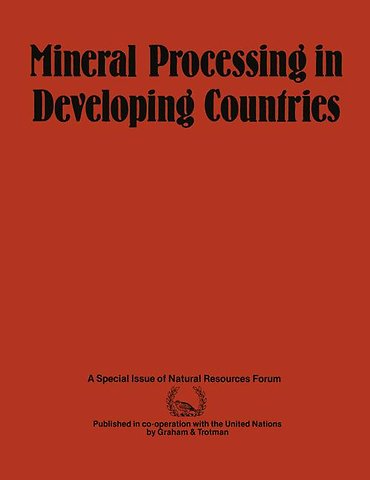Mineral Processing in Developing Countries
A Discussion of Economic, Technical and Structural Factors
Paperback Engels 1984 1984e druk 9780860105008Samenvatting
Conferenee on Industrialization, made the This study ex amines the faetors which affeet the loeation of mineral proeessing in developing following points: eountries. These ean be divided into two broad "National industrialization policies should eategories. The first of these eneompasses stress the objeetive of inereasing the extern al eeonomic and teehnieal elements affeeting the autonomy of the developing regions and countries, 1 basic vi ability of a projeet. These include eapital, with special attention to the promotion of skilled labour, raw materials, eomplementary exports . .. (and) also seek to inerease the value inputs, energy, eeonomies of seale, teehnological added to raw materials being proeessed and ehange, growth in demand, proximity to export exported. markets and transport eosts. The seeond eonsists In the light of the foregoing, it is proposed that of struetural elements including sourees of finanee national industrialization policies should: (a) prp and teehnology, trade and investment and mote integrated industrialization based on the taxation policies.
Specificaties
Lezersrecensies
Inhoudsopgave
Rubrieken
- advisering
- algemeen management
- coaching en trainen
- communicatie en media
- economie
- financieel management
- inkoop en logistiek
- internet en social media
- it-management / ict
- juridisch
- leiderschap
- marketing
- mens en maatschappij
- non-profit
- ondernemen
- organisatiekunde
- personal finance
- personeelsmanagement
- persoonlijke effectiviteit
- projectmanagement
- psychologie
- reclame en verkoop
- strategisch management
- verandermanagement
- werk en loopbaan
